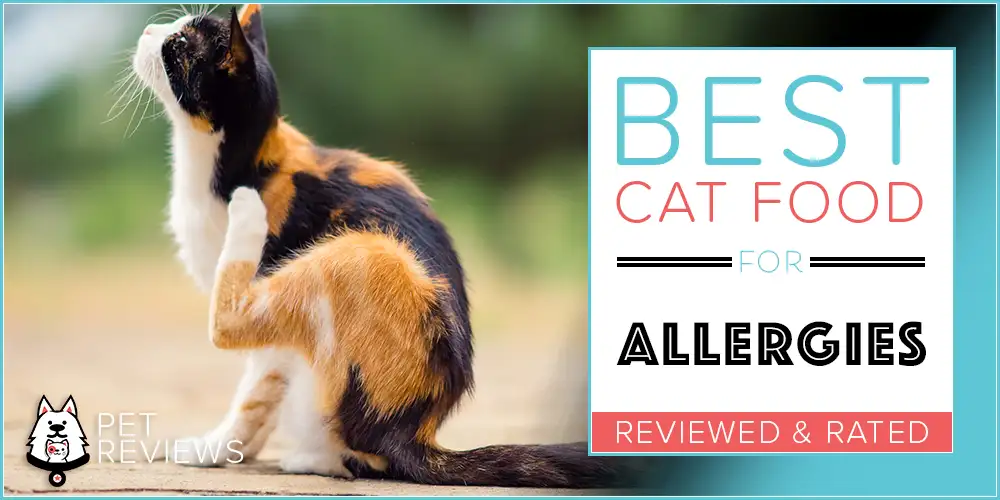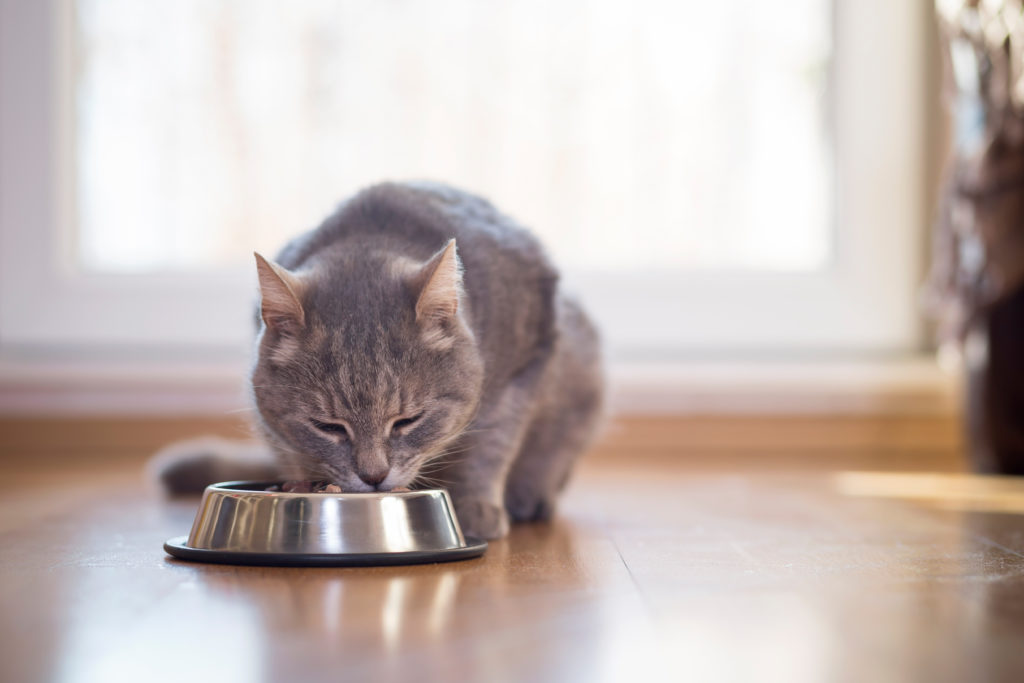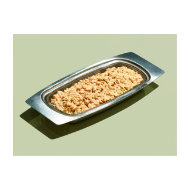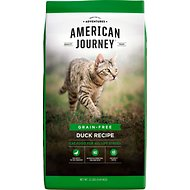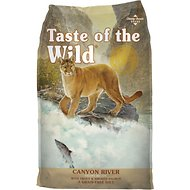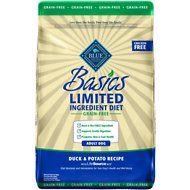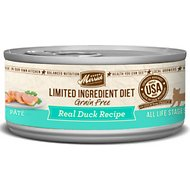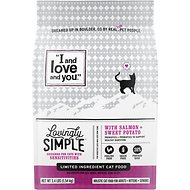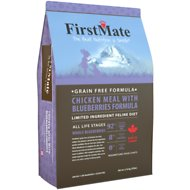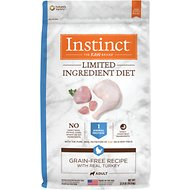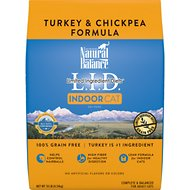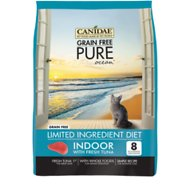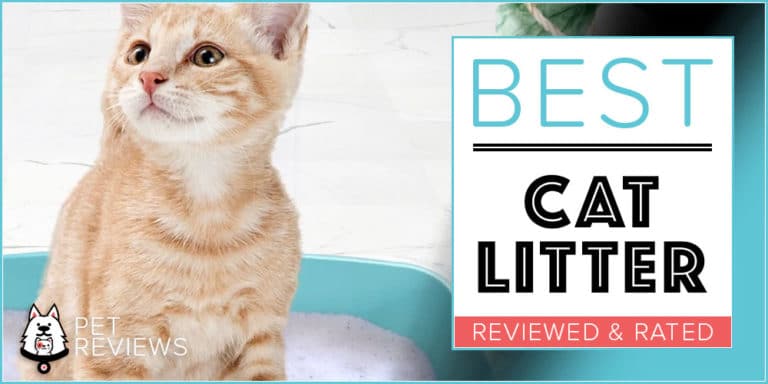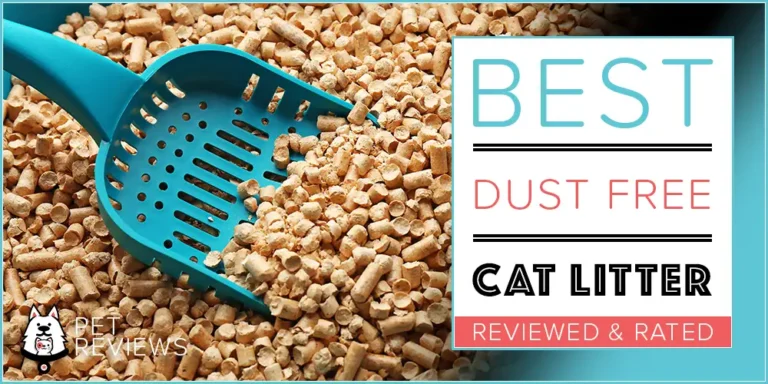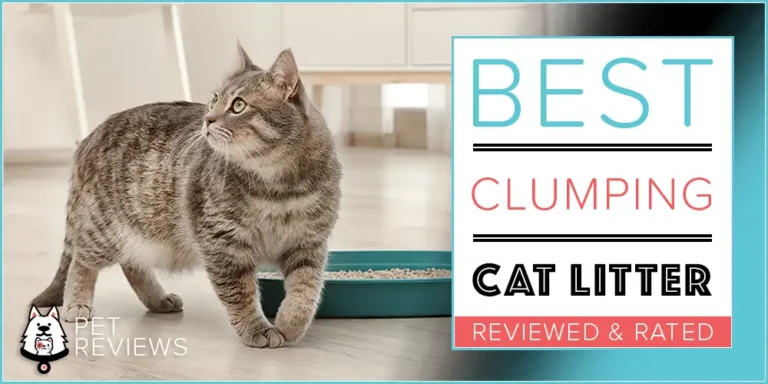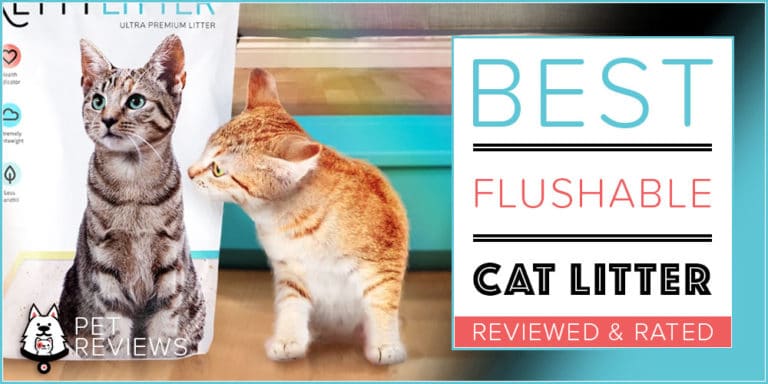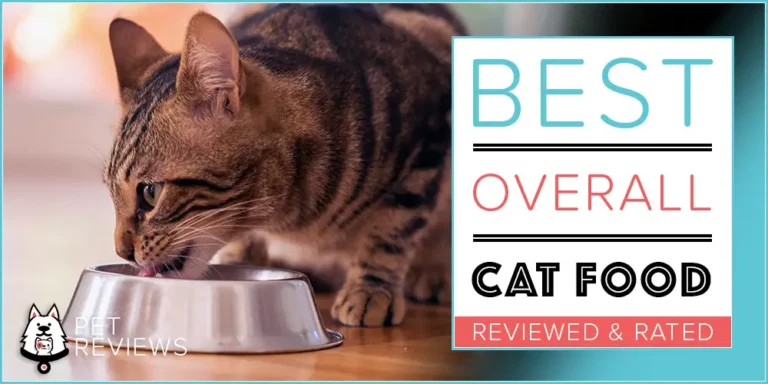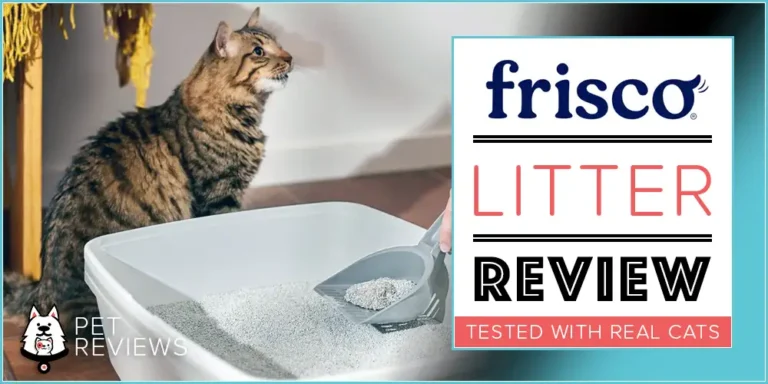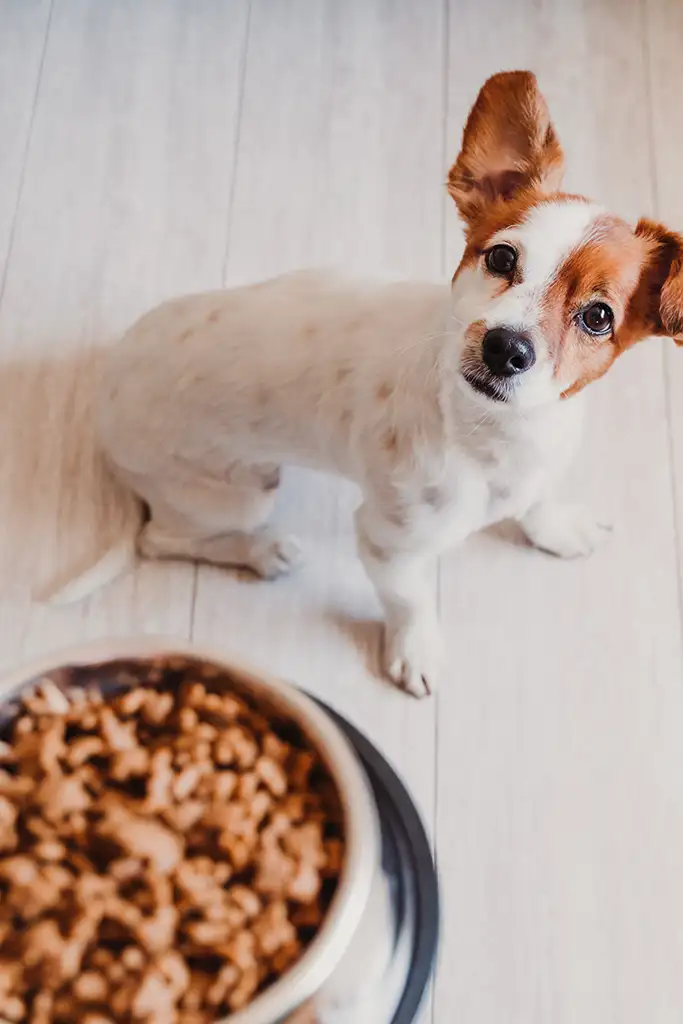9 Best (Hypoallergenic) Cat Foods for Cats with Allergies in 2024
Quick Guide
- What is the Best Cat Food for Allergies?
- 6 Things to Know About Allergies in Cats
- Tips for Managing Food Allergies in Cats
- What to Look for in a Cat Food for Allergies
- The 11 Best Cat Foods for Allergies
- Smalls for Smalls Fresh Chicken Pate
- American Journey Duck Recipe Grain-Free Dry Cat Food
- Taste of the Wild Canyon River Grain-Free Dry Cat Food
- Blue Buffalo Basics LID Grain-Free Duck & Potato Recipe Dry Food
- Merrick Limited Ingredient Diet Grain-Free Real Duck Recipe Canned Food
- I and Love and You Lovingly Simple Limited Ingredient Diet Salmon & Sweet Potato Dry Cat Food
- 4 More Top-Rated Cat Foods for Allergies
- Frequently Asked Questions
Is your cat itching and scratching more than usual? Has he been experiencing recurrent ear infections? Does he seem to be chewing on his paws or grooming excessively?
All of these things are signs of a potential allergy.
You may not think of your cat as being prone to allergies, but the truth is that cats can suffer from inhalant allergies, environmental allergies, and food allergies just as much as people can. Only about 10% to 15% of allergies in cats are caused by food, but they are more difficult to diagnose and treat because there is no quick and easy diagnostic test for cat food allergies.
Treating food allergies in cats is a multi-stage process that starts with an elimination diet and ends with a food trial. It’s not a difficult process, but it does require some time and commitment.
In this article, we’ll cover the subject of allergies in cats, particularly food allergies, and how to manage them. You’ll also receive helpful tips for choosing the best cat food for allergies and see our top 10 picks for the best cat foods in this category.
What is the Best Cat Food for Allergies?
- Smalls Ground Bird Human-Grade Cat Food – The Healthiest
- American Journey Duck Recipe Grain-Free Dry Cat Food – Most Affordable
- Taste of the Wild Canyon River Grain-Free Dry Cat Food – Most Popular
- Blue Buffalo Basics LID Grain-Free Duck & Potato Recipe Dry Food
- Merrick Limited Ingredient Diet Grain-Free Real Duck Recipe Canned
- I and Love and You Lovingly Simple Limited Ingredient Diet Salmon
6 Things to Know About Allergies in Cats
When you think of food allergies, you probably think of a person’s face turning red and his throat swelling shut. Food allergies in humans can cause life-threatening reactions and, while they are still serious in cats, they present in a different way.
In many cases, cat food allergy symptoms take time to develop, and they can pop up at any time. Food allergies develop when the cat’s immune system mistakenly identifies a foodborne protein as a foreign invader and launches an immune attack against it. This reaction causes accidental damage to the cat’s body, resulting in symptoms such as sneezing, itching, vomiting, and diarrhea.
Here are 6 things every cat owner should know about food allergies in cats:
- Food allergies are an immune reaction to an antigen in food. In other words, the cat’s immune system is reacting to a specific protein found in a particular food item.
- Cats with food allergies typically develop skin or gastrointestinal symptoms, sometimes both. Many cats develop itchy skin or recurrent ear infections while others develop vomiting and diarrhea. Some cats develop both skin and digestive symptoms.
- The most common food allergens for cats are chicken, beef, dairy, egg, and fish. While cats can develop allergies to grains, protein allergies are much more common.
- There is no simple test to diagnose a food allergy in cats – you’ll have to perform a food trial that involves feeding a limited ingredient diet for at least 6 weeks until all signs of the allergy resolve. After that, you’ll introduce potential allergens one at a time until you identify the culprit. From there, choose a recipe free from that ingredient.
- Food allergies can only be treated by avoiding the offending food ingredient – you can choose to continue feeding the product from the food trial or choose another recipe.
- Aside from food, cats can also be allergic to environmental allergens like dust and mold as well as specific substances like fabrics or chemicals.
If you suspect that your cat is suffering from a food allergy, you may want to talk to your veterinarian. Because cat food allergy symptoms overlap with other health problems, it’s always a good idea to have your cat checked out so your vet can rule out any underlying health problems. If your vet confirms the diagnosis, you’ll need to change your cat’s diet.
Tips for Managing Food Allergies in Cats
Once your veterinarian has ruled out potential underlying health issues that might be causing your cat’s symptoms, you’ll need to undergo a food trial with an elimination diet to confirm your suspicions of a food allergy. To conduct a food trial, you’ll need to transition your cat onto a new diet that is made with a novel source of protein and carbohydrate. The term novel simply means that it is an ingredient your cat hasn’t eaten before and therefore has a low risk for being allergic to it. Some examples of novel proteins and carbs for cats include duck, rabbit, venison, sweet potatoes, chickpeas, and tapioca.
To minimize digestive upset, transition your cat slowly onto the food trial product over the period of 7 to 10 days. Once your cat has adjusted to the new diet, you’ll need to maintain it for at least 6 weeks but ideally 8 to 12 weeks. The goal is to give your cat’s body time to heal from the damage and to resolve all signs of the food allergy.
After your cat has recovered from the food allergy, you then have two options:
- Keep feeding your cat the elimination diet.
- Reintroduce potential allergens to identify the culprit.
If you’re not concerned with identifying the ingredient your cat is allergic to, you can simply keep feeding your cat the product you used for the food trial. We’ll go into greater details in the next section about choosing a product to use for your cat’s elimination diet.
If you want to know what ingredient your cat is allergic to, you’ll need to keep feeding your cat the elimination diet but start adding small amounts of potential allergens one at a time. For example, you might add an ounce or two of cooked chicken to your cat’s daily diet or a spoonful of 100% salmon wet food. If your cat’s allergy symptoms develop within a week of you adding the new food, you have positively identified your cat’s allergy. You can continue the testing if you think he may be allergic to more than one ingredient.
Once you have identified the ingredient your cat is allergic to, you then have another decision to make. Again, you can keep feeding your cat the elimination diet, or you can switch to a different cat food free from the offending ingredient. Elimination diets can sometimes be expensive, so you may want to switch to a more affordable product for long-term feeding. Just make sure that it doesn’t contain any ingredients made with the food your cat is allergic to. That is the key to cat food allergies treatment!
Now that you understand the steps involved in identifying and managing cat food allergies let’s talk about the best cat food to use for an elimination diet.
What to Look for in a Cat Food for Allergies
The goal in switching your cat to an elimination diet is to avoid any ingredients that might trigger an allergic reaction. Because cats can be allergic to many different ingredients, one thing you should keep in mind is that the shorter the ingredients list is, the less potential there is to trigger an allergy. Limited Ingredient Diet (LID) cat foods are specifically designed to contain a lower number of main ingredients, and many are made with novel proteins and carbohydrates.
Generally speaking, here are a few things to look for in cat food for allergies:
- Limited number of ingredients. The fewer ingredients in your cat’s food, the lower the potential for triggering an allergy. Whether you’re looking for an elimination diet or a long-term feeding solution, limited ingredient cat food is a good option for cats with allergies.
- Novel, single-source animal protein. Protein is the foundation of a healthy diet for cats and should provide at least 30% of his daily calories, ideally more. When dealing with allergies, you need to choose a novel protein – one your cat hasn’t eaten before. It’s also a good idea to choose a recipe that only contains one protein source.
- Digestible carbohydrates. Grains are less likely to trigger allergies in cats than proteins, but you should still limit the carbohydrate content of your cat’s food. Look for digestible sources like sweet potatoes, chickpeas, and tapioca as well as whole grains like brown rice and oatmeal.
- Blend of omega fatty acids. Omega fatty acids are essential for healthy skin and coat, so they’ll help your cat recover from skin-related allergy symptoms. Animal-based fats like chicken fat and salmon oil are best, but plant oils like canola oil can help provide a balance of omega-3s and 6s.
- No artificial additives. Artificial additives like colors, flavors, and preservatives can trigger allergies in cats. Plus, they don’t provide any nutrition, so there is no reason to include them.
Now that you know the basics about cat food allergies treatment options, you’re ready to start shopping for limited ingredient cat food. Keep reading to see our top picks for the best cat food for allergies.
The 11 Best Cat Foods for Allergies
If you’re wondering what food is good for cats with allergies, you’ll be glad to know that there are many options to choose from. It is important to start with a limited ingredient diet made with a novel protein and carbohydrate. From there, however, you have some freedom to choose the specific recipe as well as choosing between dry food and wet food.
To help you get started in shopping for the best dry cat food for allergies as well as canned limited ingredient cat food, we’ve assembled our top 10 picks. See the reviews below:
Smalls for Smalls Fresh Chicken Pate
Our Top Pick for the Best Cat Food Overall for Allergies: Smalls for Smalls creates human grade recipes specially formulated based on a profile you fill out when you sign up. If your cat is unable to have certain ingredients or has allergies or health problems, you are able to indicate that information! The food is delivered to your doorstep and is easy to store and serve. Cats are primarily carnivores, so they get most of their nutrition from the meat in their food. Smalls for Smalls recipes, such as the Fresh Turkey Pate, are all protein first, so you know your cat is getting optimal nutrition during every meal. Another thing to think about is the fact that cats actually get most of their hydration from their food, as well. Smalls for Smalls Fresh Turkey Pate has a high water content, which means your cat will stay hydrated and healthy. If the ingredients aren’t good enough for humans, they aren’t good enough for cats, either, according to Smalls for Smalls, so when you subscribe, you know you are giving your cat food you can feel good about from a company you can trust.
American Journey Duck Recipe Grain-Free Dry Cat Food
Our Top Pick for the Best Affordable Cat Food for Allergies: Limited ingredient cat food can be expensive, so if you’re looking for a more affordable option that won’t trigger your cat’s allergies, consider this American Journey Duck Recipe Grain-Free Dry Cat Food. This formula features fresh duck as the primary ingredient with grain-free carbohydrates like tapioca, peas, and flaxseed. For an affordable cat food, this product is extremely high in protein (40%) and contains a variety of beneficial supplements including supplemental fiber, chelated minerals, and dried fermentation products (probiotics). This formula is rich in essential fats for energy, including a blend of omega-3 and omega-6 fatty acids for healthy skin and coat. It is loaded with natural meat flavor and nutritionally balanced to help your cat recover his full health.
- Pros: Real duck as first ingredient, digestible grain-free carbohydrates, novel carb sources, rich in essential fatty acids, high in protein (40%), supplemental fiber, chelated minerals, probiotics
- Cons: Contains chicken ingredients (some cats may be sensitive), contains some plant protein
Taste of the Wild Canyon River Grain-Free Dry Cat Food
Our Top Pick for the Most Popular Cat Food for Allergies: When you can’t decide what to feed your cat, you can always go with a popular brand like Taste of the Wild. Though this brand doesn’t offer any limited ingredient cat food options, this Canyon River Grain-Free Dry Cat Food checks many of the same boxes. First, it is made with novel sources of protein and grain-free carbohydrates. The first ingredient is fresh trout, followed by ocean fish meal. You’ll also find smoked salmon as a supplemental protein source, but the recipe does not contain any chicken ingredients. Digestible grain-free carbohydrates include sweet potatoes, potatoes, as well as fresh fruits and vegetables to provide natural sources for key nutrients. Overall, this formula contains 32% protein and 16% fat with 3% fiber. It is supplemented with chelated minerals to ensure optimal nutrient absorption as well as dried fermentation products for probiotic support.
- Pros: No chicken ingredients, novel protein and carbohydrates, grain-free carbohydrates, blend of essential fatty acids, rich in fiber, chelated minerals, probiotics for healthy digestion
- Cons: Not a single-source protein recipe, could be higher in protein
Blue Buffalo Basics LID Grain-Free Duck & Potato Recipe Dry Food
Our Top Pick for the Best Grain-Free Cat Food for Allergies: When it comes to the best dry cat food for allergies, Blue Buffalo offers a variety of different options in their Basics line of limited ingredient diets. This Blue Buffalo Basics LID Grain-Free Duck & Potato Recipe Dry Food is a great choice for your cat because not only is it made with a limited number of ingredients, but it features a novel source of protein and carbohydrate. Fresh duck is the first ingredient followed by duck meal and there are no chicken ingredients in this recipe. Grain-free carbohydrates like peas, tapioca, and potato provide carbohydrate energy and fiber while fresh berries and herbs provide natural sources for key nutrients. This recipe is rich in fiber for healthy digestion and contains dried fermentation products for probiotic support. You’ll also be glad to know that it contains Blue Buffalo’s LifeSource Bits which contain a proprietary blend of vitamins, minerals, enzymes, and antioxidants to ensure complete and balanced nutrition for all cats.
- Pros: Single-source protein, novel protein and carbohydrate, grain-free carbohydrates, rich in fiber, supplemented with LifeSource Bits, dried fermentation products for probiotics, fresh berries
- Cons: Could be higher in protein content (30%), contains plant protein (pea protein)
Merrick Limited Ingredient Diet Grain-Free Real Duck Recipe Canned Food
Our Top Pick for the Best Wet Cat Food for Allergies: If you prefer to feed your cat wet food, you’ll still find that there are plenty of limited ingredient recipes out there. This Merrick Limited Ingredient Diet Grain-Free Real Duck Recipe Canned Food, for example, is an excellent choice. As a wet food product, this cat food is naturally high in protein and moisture but low in carbohydrates. It features fresh duck as the main ingredient and a single source of premium animal protein. With grain-free carbohydrates like peas and alfalfa, this recipe also contains novel carbohydrates unlikely to trigger a negative reaction. Aside from fresh duck, alfalfa meal, and flaxseed oil, most of the remaining ingredients are beneficial supplements included to ensure complete and balanced nutrition. Overall, this is a simple recipe that works well for cats with allergies.
- Pros: Single-source novel animal protein, digestible grain-free carbohydrates, rich in fiber and moisture, limited number of ingredients, supplemented for balanced nutrition
- Cons: Contains plant protein (pea protein), main source of fat is plant-based (flaxseed oil)
I and Love and You Lovingly Simple Limited Ingredient Diet Salmon & Sweet Potato Dry Cat Food
Our Top Pick for the Best Cat Food for Sensitive Stomach and Allergies: If your cat has food allergies and a sensitive stomach, you need to be doubly careful about what you feed him. A limited ingredient diet is a must to reduce the risk for triggering allergies, but you also need to focus on the quality and digestibility of the recipe to avoid digestive upset. This I and Love and You Lovingly Simple LID Salmon & Sweet Potato Dry Cat Food is a great choice for a number of reasons. First, it is specifically designed for cats with sensitivities and it is made with a low number of primary ingredients. Next, it features novel proteins like salmon and menhaden fish meal without the use of any chicken ingredients. It is rich in healthy fats, including a blend of omega-3 and omega-6 fatty acids for healthy skin and coat. It also contains digestible grain-free carbohydrates like sweet potatoes and chickpeas. All in all, this recipe provides high-quality nutrition that will be gentle on your cat’s stomach.
- Pros: Gentle on sensitive stomachs, limited number of ingredients, novel proteins, no chicken ingredients, blend of omega fatty acids, digestible grain-free carbohydrates, probiotics
- Cons: Expensive to feed as a staple diet, not a single-source protein recipe
4 More Top-Rated Cat Foods for Allergies
If the cat food recipes above don’t work for your cat, don’t worry! There are plenty of limited ingredient diets out there. Here are four more top-rated cat foods for allergies:
FirstMate Chicken Meal with Blueberries Formula Limited Ingredient Diet Dry Cat Food
Though FirstMate cat food is not made in the USA, it is a highly trusted brand known for the quality of its ingredients. This FirstMate Chicken Meal with Blueberries Formula Limited Ingredient Diet Dry Cat Food is a great choice for cats with allergies because it is a very limited ingredient formula and highly digestible. This formula features chicken meal as a single source of protein with digestible carbohydrates including potatoes and blueberries. It won’t work if your cat has a sensitivity to chicken, but it only really contains four main ingredients. Aside from those ingredients, it is supplemented with chelated minerals and vitamins to ensure nutritional balance. Overall, this formula provides 36% protein, 16% fat, and 4% fiber. It is highly digestible and full of natural flavor your cat will love.
- Pros: Single-source protein, limited number of ingredients, grain-free carbohydrates, highly digestible, antioxidant-rich, chelated minerals, rich in fiber for healthy digestion
- Cons: Not a chicken-free recipe, expensive to feed as a staple diet
Nature’s Variety Instinct LID Grain-Free Real Turkey Recipe Dry Food
If you’re looking for a chicken-free recipe to feed your cat, try this Nature’s Variety Instinct LID Grain-Free Real Turkey Recipe Dry Food. This formula features a limited number of main ingredients with turkey as a single source of premium animal protein. It is grain-free as well, made with digestible carbohydrates like peas and tapioca. This formula provides a blend of omega-3 and omega-6 fatty acids for healthy skin and coat as well as 18% total fat content to provide healthy energy. It is supplemented with chelated minerals to ensure optimal nutrient absorption with vitamin supplements for nutritional balance. You’ll also love that the kibble is coated in freeze-dried turkey to provide a boost of extra nutrition as well as plenty of natural flavor.
- Pros: Single source protein, novel animal protein, digestible grain-free carbohydrates, limited number of ingredients, blend of omega-3 and omega-6 fatty acids, chelated minerals, freeze-dried coating
- Cons: Expensive to feed as a staple diet, main source of fat is plant-based (canola oil)
Natural Balance LID Turkey & Chickpea Grain-Free Formula Dry Food
The Natural Balance brand is known for providing a wide variety of limited ingredient formulas. You should be mindful of which you pick, however, because a few of them list green peas as the first ingredient rather than a source of animal protein. This Natural Balance LID Turkey & Chickpea Grain-Free Formula Dry Food is a good choice because it is nutritionally balanced, made with a limited number of ingredients, and features fresh turkey as the first ingredient. It is made with grain-free carbohydrates like chickpeas and potatoes with a blend of omega fatty acids for healthy skin and coat. It also contains chelated minerals for optimal nutrient absorption and vitamin supplements for balance.
- Pros: Single source of animal protein, novel protein, grain-free carbohydrates, limited number of ingredients, highly digestible, chelated minerals, rich in fiber for digestion
- Cons: Contains some plant protein (pea protein), could be higher in protein content (30%)
Canidae Grain-Free PURE Ocean with Tuna Limited Ingredient Diet Dry Food
If quality is what you’re going for, the Canidae brand certainly delivers. This Canidae Grain-Free PURE Ocean with Tuna Limited Ingredient Diet Dry Food is a great option in limited ingredient diets because it features several sources of novel animal protein with grain-free carbohydrates and just 8 main ingredients. This formula is packed with protein at 36% with 5% fiber to ensure healthy and regular digestion. It is supplemented with chelated minerals to ensure optimal nutrient absorption, but your cat will also get natural sources of nutrients from the lentils, sweet potatoes, and chickpeas. The recipe is loaded with meat flavor and also provides a blend of omega fatty acids for healthy skin and coat.
- Pros: Novel protein sources, grain-free digestible carbohydrates, very limited number of ingredients, rich in omega fatty acids, chelated minerals probiotics for healthy digestion, protein-rich (36%)
- Cons: Expensive to feed as a staple diet, may be too high in fiber for some cats
Frequently Asked Questions
- What are the most common cat food allergies? – Both dogs and cats can be allergic to any food ingredient but, for cats, common proteins are the biggest issue. The top cat food allergies are chicken, beef, dairy, egg, and fish. Surprisingly, grains are not the most common allergens for cats. Just because your cat can tolerate grains, however, doesn’t mean that you should feed him a grain-based cat food. Protein is still the most important nutrient for cats and high-carb diets are difficult for your cat to digest.
- How do I know if my cat has a food allergy? – Unfortunately, there is no simple test to say for sure whether your cat has a food allergy or not. The only thing you can really do is complete a food trial in which you change your cat’s diet to include a novel source of protein and carbohydrate for a period of at least 6 weeks. Once all signs of the allergy have disappeared, you then introduce potential allergens one at a time until you find out what’s causing the problem. If your cat develops a reaction within a week of introducing that ingredient, he is allergic.
- How can I treat my cat’s allergies? – If you’re wondering how to treat food intolerance in cats, the only real treatment that works is to eliminate the offending ingredient from your cat’s diet. In order to do that, of course, you’ll need to identify the offending ingredient which involves a food trial starting with an elimination diet for at least 6 weeks. After all signs of the allergy have gone away, you can reintroduce potential allergens one at a time to identify the culprit. From there, choose a cat food free from that ingredient for long-term feeding. You could also just keep feeding your cat the elimination diet.
- What is the best hypoallergenic cat food? – The term hypoallergenic is frequently misunderstood. All it means is that the product contains no ingredients that are likely to trigger allergies. The problem is that cats can be allergic to a wide variety of ingredients, so a product that is hypoallergenic for one cat may not be for another cat. The only way to find the best hypoallergenic cat food is to identify your cat’s specific allergy and then choose a high-quality, limited ingredient cat food free from that allergen.
- How long does it take for a cat food allergy to go away? – The answer to this question differs from one cat to another, so you’ll need to work with your cat to see what works. In most cases, it takes at least 6 weeks for all signs of an allergy to disappear, but some cases may take as long as 8 to 12 weeks. If you’re conducting a food trial, it is a good idea to do it for at least 8 to 12 weeks just to be sure that all signs of the allergy have disappeared.
If your cat is itching and scratching or experiences recurrent ear infections, it could be a food allergy. Treating food allergies in cats is not necessarily difficult, but it does require a little bit of time and intention. You’ll need to put your cat on an elimination diet and then feed him a recipe free from the ingredient he’s allergic to.
Limited ingredient cat food is the best for cats with allergies and there are plenty of options to choose from. If you’re not sure where to start your search, try one of our top-rated picks for the best cat food for allergies reviewed above.

